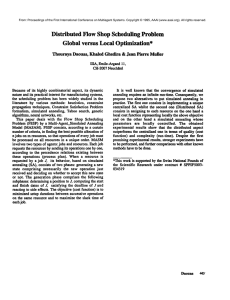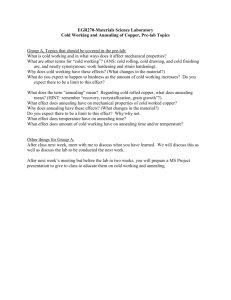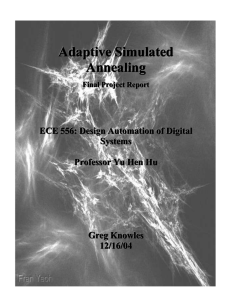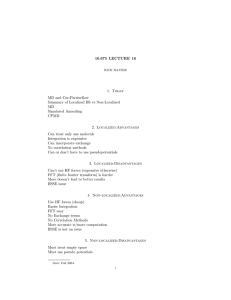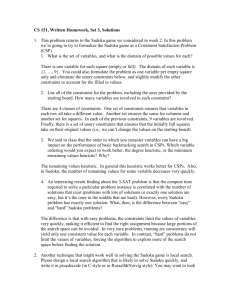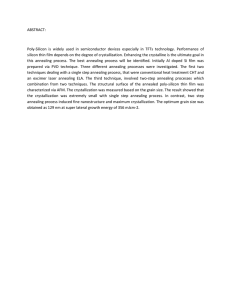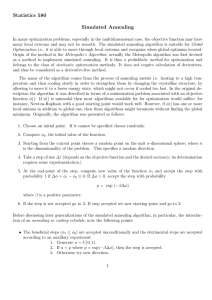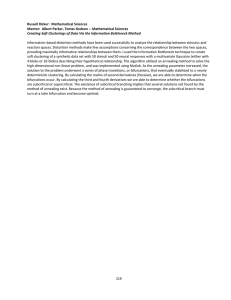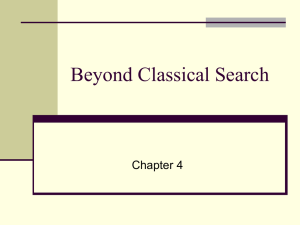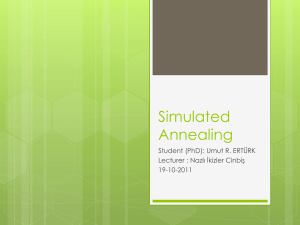Solving Sudoku with Simulated Annealing
advertisement
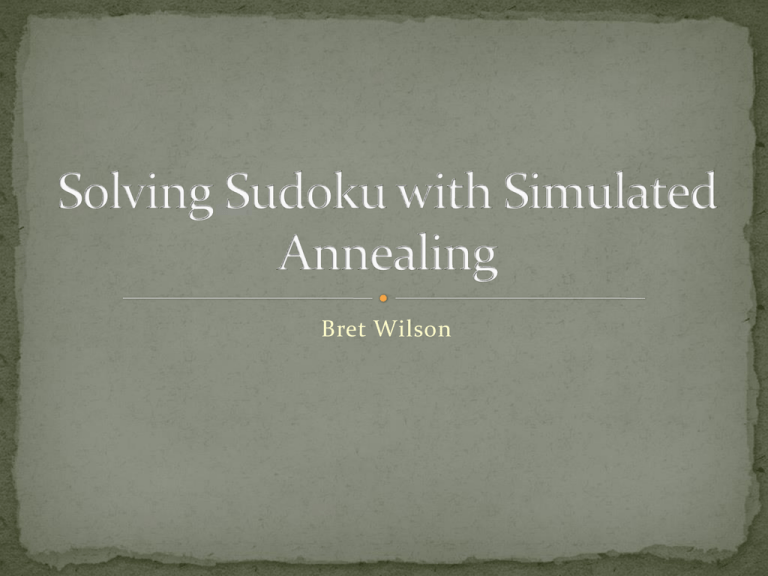
Bret Wilson Analog of physical process of annealing in metals Heat, then cool slowly Start with random configuration Try nearby neighbors Lower temperature = become pickier Only consider states in which each small square has exactly 1 of each digit 0 – 9 Why? It’s trivial to solve either small squares, rows, or columns by themselves – I chose small squares. -1 point for each different number in each row and column Minimum (best) score = -9 x 9 x 2 = -162 Swap any 2 digits in same small square -> candidate Accept new state if e-∆S/T – R > 0 (Metropolis-Hastings Algorithm) R is random number in range [0,1] Always accept better states Accept worse states more often when T is higher 1 5 6 9 4 7 1 7 5 7 2 3 5 8 3 2 3 9 8 4 9 1 2 6 6 4 8 6 9 2 9 5 1 4 7 1 8 1 3 4 7 3 9 6 5 4 7 5 8 2 6 3 2 8 6 1 5 8 1 5 2 9 3 7 4 2 3 6 9 1 7 6 8 3 9 4 2 7 8 4 5 1 5 6 9 4 7 1 7 5 7 2 3 5 8 3 2 3 9 8 4 9 1 2 6 6 4 8 6 9 2 3 5 1 4 7 1 8 1 3 4 7 9 9 6 5 4 7 5 8 2 6 3 2 8 6 1 5 8 1 5 2 9 3 7 4 2 3 6 9 1 7 6 8 3 9 4 2 7 8 4 5 ∆S = -1 e-∆S/T will always be > 1, no matter what T and R are. So we accept. What should our initial value for T be? Can find by trial and error How fast should we decrease T? Linear: T <= T – i where i > 0 Geometric progression: T <= c*T where 0 < c < 1 Change T based on current score currState <= createInitialState() currScore <= score(currState) bestState <= currState bestScore <= currScore while (T > END) newState <= generateNeighbor(currState) newScore <= score(newState) if (exp((currScore - newScore)/T) - rand(0,1) > 0) currState <= newState currScore <= newScore if (currScore < bestScore) bestState <= currState bestScore <= currScore T <= c*T return bestState Good: Quickly finds a minimum Bad: May not find global minimum (best solution) Increasing temperature makes it slower, but less likely we will get stuck in local minimum Carr, Roger. "Simulated Annealing." From MathWorld- -A Wolfram Web Resource, created by Eric W. Weisstein. http://mathworld.wolfram.com/SimulatedAnnealing. html “Simulated Annealing.” Wikipedia. http://en.wikipedia.org/wiki/Simulated_annealing “Simulated Annealing Applet.” Heaton Research. http://www.heatonresearch.com/articles/64/page1.ht ml
